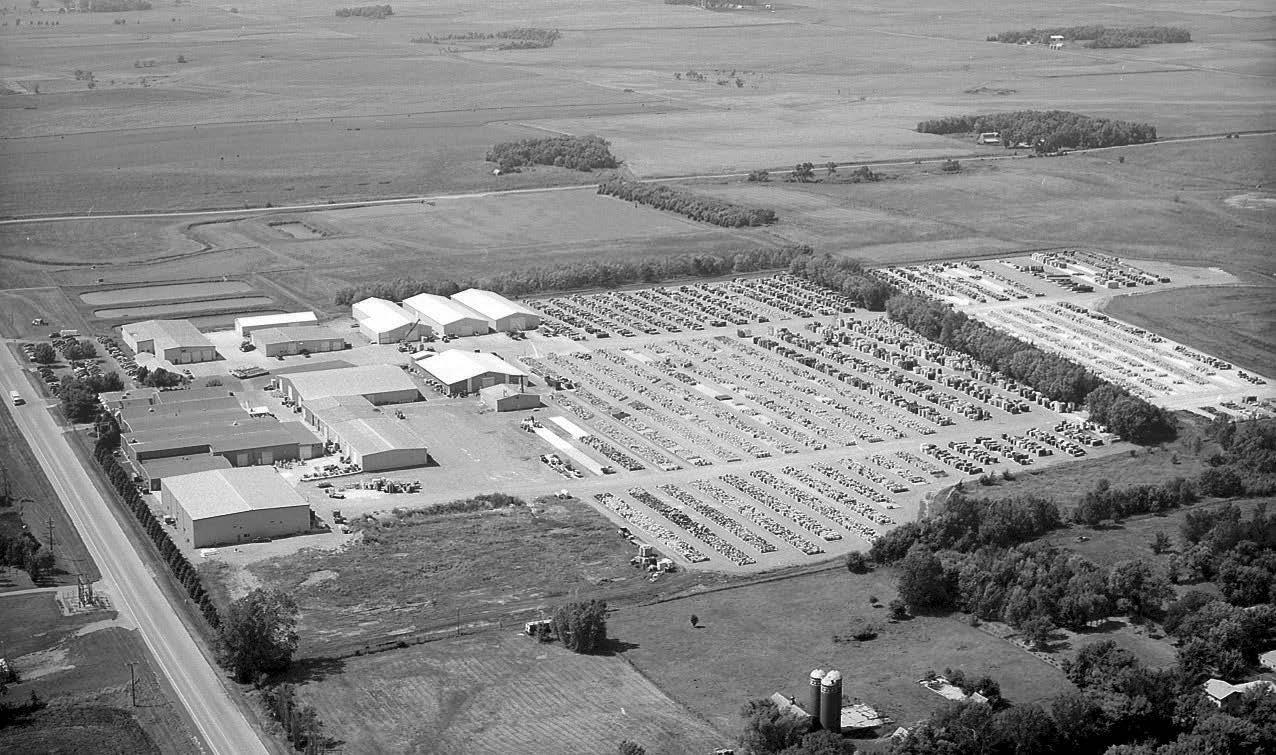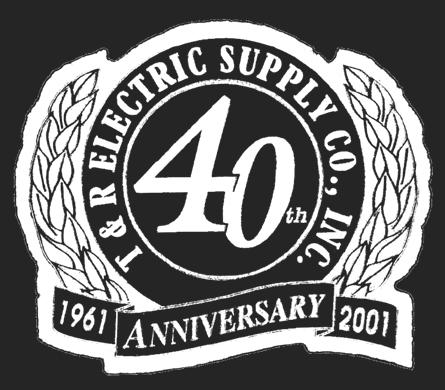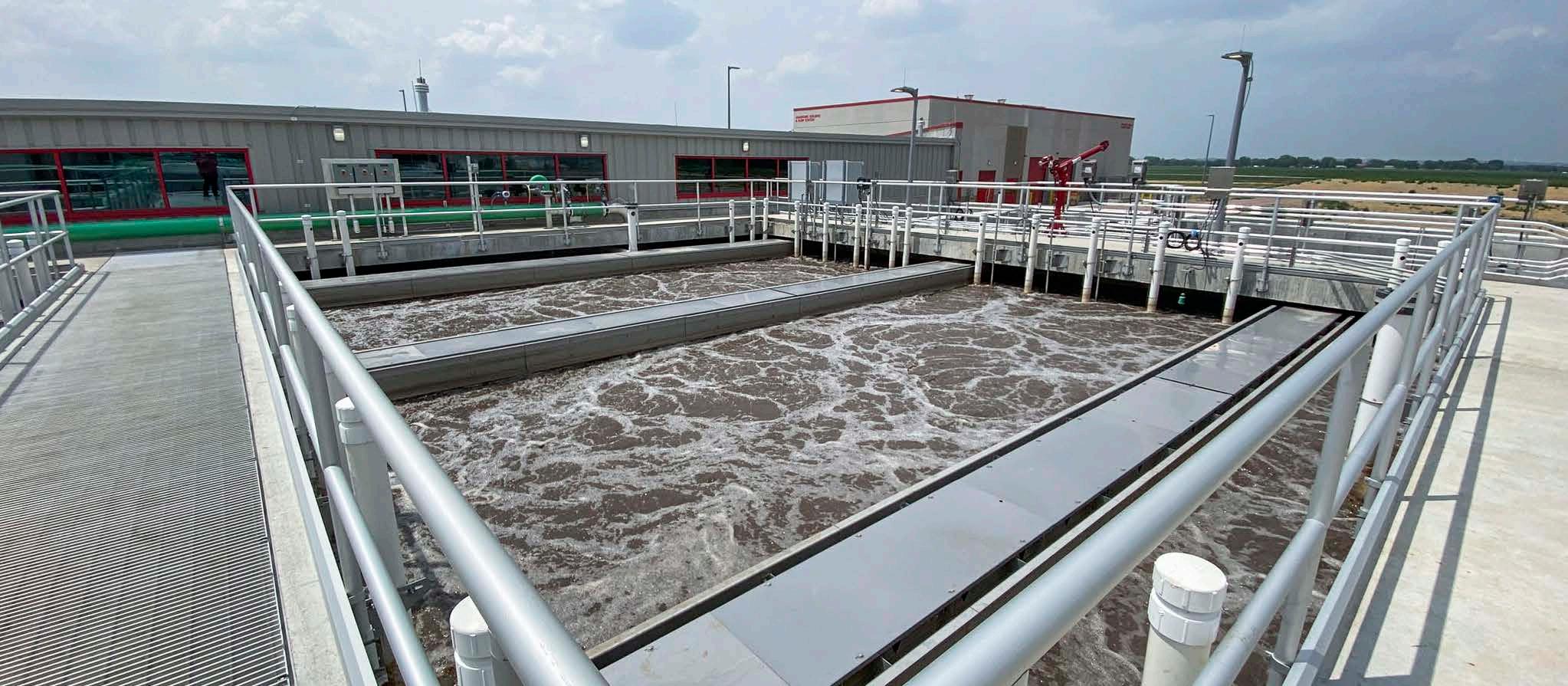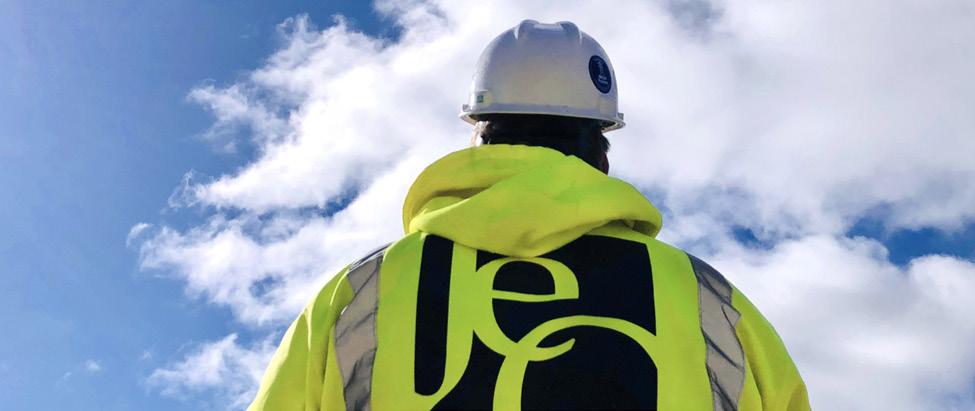League of Nebraska Municipalities
July 2025
Decaying infrastructure, a concern to utilities
by George Wolverton
Editor's Note: This editorial was written by Utilities Section Coordinator George Wolverton appeared in the May 1984, Nebraska Municipal Review. This editorial seemed very powerful in that every word is still true today. Several years ago, League staff was readily able to produce a list of well over 100 Nebraska water systems without meters. A lot of issues remain the same today as they existed 35 years ago. Infrastructure is an awesome word. Today, the decaying infrastructure is a concern of utilities and city governments. Repairing, replacing and maintaining existing streets, bridges, train tracks, sewer, water, natural gas and electric systems has been estimated by some in the industry to cost approximately $3 trillion for the next 16 years. A staggering and sobering figure to think about. This figure does not include money spent on expanding these systems.
Although no figures are available, utilities upkeep must account for a large share of the estimated costs. The life expectancy of the wastewater and water system is said to be between 40 and 60 years. Parts of all systems are now at least that old and may need maintenance or replacement.
Checking the condition of a wastewater system while in service can be done by television cameras and monitors. Cameras are moved through pipes on cables
1335 L Street
Lincoln, NE 68508
(402) 476-2829
Fax (402) 476-7052
and monitored by crews to locate areas needing repairs. A television transmission can give an accurate report of the condition of lines. The crew monitoring the transmission can give exact locations of needed repairs. Still pictures can be made of located problems and repair crews then can go to the site of the repair fully prepared.

estimated $59,000 per year. This village has a population of 360 so again the savings are important.
It is harder to find areas needing preventative maintenance in a water distribution system. Water leaks cost a utility money. If water is treated, the cost for each gallon sold increases to pay for those unknown leaks in the system.
This past summer the Midwest Assistance Program, Inc. paid for three community water audits with funds from a grant by the U.S. Department of Health and Human Services. Two of these water audits were conducted in villages and one in a city of the second class.
One village had unknown leaks totaling an estimated $1,860 a year – no small amount of money to a village with a population of 350.
The second village purchased their water for 60 cents per thousand.
Leaks were found totaling an estimated 27,000 gpd and when repaired could save the village an
The second-class city, population 1,700, had leaks totaling an estimated 59,000 gpd. Though the leakage was greater, repairs would save the city only an estimated $5,300 a year due to the low cost of production.
These leaks were all classed as “infrastructure” as they were found in service taps at the mains, joints where mains were put together and joints where fire hydrants were installed. None of these leaks had surfaced before the water audits. Two of them surfaced during the water audits. A third leak was found to have washed away into a break in a wastewater line. The wastewater system was handling all the leaking water thereby increasing its cost of operation as well.
Finding and repairing these problems will be neither easy nor cheap. A street, road or bridge shows its deterioration readily and repairs can be made before an emergency exists. This is not true of underground utilities.
Continued on page 2
Decaying infrastructure, a concern to utilities
Continued from page 1
Too many times, the old axiom “out of sight, out of mind” applies. Everyone expects the water to be there when the tap is turned, waste to disappear when flushed down the drain, the lights to come on when the switch is flipped, and the streets, roads and bridges to be in usable condition when needed. This is generally true of utilities we see easily but when a water main breaks or a wastewater line collapses or plugs, it is not seen until it surfaces or waste backs into someone’s basement.
Due to age and deterioration this may happen in older areas more frequently in the future. Let’s hope it can be avoided by good maintenance programs.
Postscript: Interesting Nebraska Utilities trivia is that the Utilities Section Board at the time was Dave Redding from the Lincoln Electric System, Dick Bacon from Alliance, Lance Hedquist from South Sioux City, Bill Brockley from Nebraska City Utilities, Glen Bennet from Sidney, Bob Ranard from Grand Island, and Lambert Blecha from the Auburn Board of Public Works.
Milestone recognition
Is your municipality or utility celebrating a historic milestone? We are encouraging members to provide any information on milestones being celebrated such as 75 years of operating the electric system.
When was your water, wastewater, electric, power generation system established? When were facilities built, improvements made, etc. If your utility is celebrating a 25-, 50-, 75-, or 100-year milestone, let the Utilities Section help you celebrate by recognizing it in the newsletter.


Building stronger connections with utility customers
By Jackson Sash, Utilities Field Rep./Training Coordinator
Municipal utilities provide some of the most essential services in any community. Clean drinking water, safe wastewater treatment, and reliable electric service are not optional luxuries. They are the backbone of public health and economic stability. Yet for many customers, the utility is invisible until something goes wrong or a bill arrives higher than expected. That is why customer relations are just as important as maintaining
equipment, because the strength of a utility’s relationship with its customers often determines how the community reacts in difficult moments.
TRANSPARENCY
One of the most effective ways to build trust is through transparency. When people are left wondering why rates have gone up or why their water pressure is lower than usual, frustration can set in quickly. A clear explanation, given before the issue becomes a complaint, makes a huge difference. Utilities that explain the reasoning behind
projects, service changes, or new requirements are far more likely to have supportive customers. Even a simple note in the monthly bill, a short update on the city’s website, or a notice posted at city hall can go a long way toward keeping people informed. Customers may not love every change, but most will appreciate being treated with honesty and respect.
ACCESSIBILITY
Accessibility is another key part of customer relations. Many smaller communities already have
Continued on page 4


Utilities Section Newsletter
Building stronger connections with utility customers
Continued from page 3
a strength in this area since the people who run the utility are also neighbors and familiar faces around town. It is not uncommon for an operator to answer a question at the grocery store or for someone in the office to explain a bill in person. These personal connections build trust and help customers feel like their concerns are being heard. As communities grow or move more communication online, it is important not to lose that sense of accessibility. Customers should always feel like they can get a clear and timely response without running into unnecessary barriers.
CONSISTENCY
Another aspect of customer relations that is often overlooked is consistency. People may not remember every notice or update they receive, but they will notice if information only comes out during emergencies or when something is going wrong. When communication is consistent, it shows customers that the utility is reliable and open, not only when there is a problem to address but as part of its daily operation. That consistency can be as simple as seasonal reminders
about water conservation, tips on preparing homes for winter, or updates on projects once they are completed. Regular communication helps customers see the utility as an active presence in the community rather than something that only reaches out when there is bad news. Over time, those steady touchpoints build familiarity and trust, making customers more likely to respond positively when larger or more difficult issues do come up.
OUTREACH
In addition, proactive outreach can help people see their utility in a new light. Hosting an open house at the water plant, offering tours for school groups, or posting short updates on social media are all simple ways to connect with the community. Even something as small as sharing a photo of an operator working late during a storm can remind people of the effort it takes to keep services reliable. Most residents never see the daily work of testing water quality, maintaining equipment, or troubleshooting outages in the middle of the night. When that work is made visible, it builds appreciation for the men and women who keep the systems

running.
CUSTOMER RELATIONS
Customer relations also play a role in long-term planning. When a community trusts its utility, conversations about rate structures, infrastructure replacement, and future investments become easier. Explaining why funds are needed for a new well or why certain upgrades cannot be delayed helps customers understand that decisions are not made lightly. Instead of viewing the utility as a faceless department, people begin to see it as a partner that is looking out for the health and future of the community. The truth is that customer relations may not involve valves, pumps, or transformers, but it is infrastructure in its own way. Just like pipes and wires need regular attention, so does the trust between a utility and the people it serves. Good communication, accessibility, and outreach are the tools that strengthen that trust. Communities that make customer relations part of daily operations will find that their systems are not only reliable but also supported by the people who depend on them.


OSHA soil classification and its role in utility safety SAFETY/HEALTH CORNER
By Jackson Sash, Utilities Field Rep./ Training Coordinator
For those working in water, wastewater, or other municipal utility services, soil is more than just the ground we dig into. It is one of the most important variables that determines both worker safety and the long-term success of a project. Every trench, pipe, or underground structure interacts with the surrounding soil.
Understanding how to classify that soil is not only a matter of good practice but could also mean the difference between life and death.
The Occupational Safety and Health Administration (OSHA) sets the standards for excavation and trenching safety under 29 CFR 1926 Subpart P. Within this regulation, OSHA requires that a “competent person” classify soil before and during

excavation activities. This classification determines the type of protective system that must be used to prevent trench collapse, which remains one of the leading causes of fatalities in excavation work.
OSHA recognizes three primary soil types: A, B, and C.
Type A soils are the most stable, with an unconfined compressive strength of 1.5 tons per square foot or greater. This group includes cohesive clays, silty clays, and hardpan. However, OSHA requires that even Type A soils be reclassified if they are fissured, subject to vibration, or previously disturbed.
Type B soils have an unconfined compressive strength between 0.5 and 1.5 tons per square foot. This category often includes silts, silty clays, and soils that have been previously disturbed.


Nebraska’s loess soils, which dominate much of the eastern and southern parts of the state, frequently fall into this category. Loess is a fine-grained windblown deposit that can stand fairly well in the short term but is highly susceptible to erosion and collapse when exposed to moisture.
Type C soils are the least stable, with an unconfined compressive strength of 0.5 tons per square foot or less. This category includes granular soils such as sand and gravel, as well as saturated soils. Along Nebraska’s rivers
Continued on page 6
HDR, we’re helping our clients push open the doors to what’s possible, every day.
OSHA soil classification and its role in utility safety
Continued from page 5
and floodplains, alluvial soils are common and often classified as Type C. The sandy soils found in Nebraska’s central sandhills are also often classified as Type C. These sandy or silty deposits are prone to water movement, and trenches in these soils represent some of the highest-risk environments for utility workers.
OSHA provides specific requirements for trench protection systems in 29 CFR 1926.652 and Appendix B. If sloping is used as the protective system, the maximum allowable slopes are as follows:
• Type A soils: three-quarters horizontal to one vertical, about 53 degrees from the horizontal
• Type B soils: one horizontal to one vertical, 45 degrees from the horizontal
• Type C soils: one and one half horizontal to one vertical, about 34 degrees from the horizontal In addition to sloping, protective options include shoring systems or trench boxes. These alternatives are often more practical in municipal utility work, especially in narrow rights-of-way where sloping would require more space than is available.
OSHA also allows for engineered tabulated data, designed by a registered professional engineer, to provide additional options for trench protection.
Soil classification is determined through field tests, such as the pocket penetrometer, shear vane, or thumb penetration test, combined with visual inspection. OSHA requires these evaluations to be performed by a competent person, defined under 29 CFR 1926.650 as someone who is capable of identifying existing and predictable hazards and who has the authority to take corrective measures.
For utilities, the importance of soil classification goes beyond immediate safety. Loess soils may slump when exposed to rainfall, making it essential to protect open excavations and to properly compact backfill. Alluvial sands common near many Nebraska rivers can wash out causing settlement and separation at joints. Dense clays found in parts of eastern Nebraska can retain water, leading to swelling pressures that stress manholes and pipe walls. These soil behaviors affect decisions about bedding material, compaction, and even

pipe type.
Seasonal changes add another layer of complexity. A soil that classifies as Type B in dry summer conditions may behave as Type C after a spring thaw or heavy rain. OSHA requires competent persons to re-evaluate soil conditions daily and even within different parts of the same trench because classification is not static.
Soil classification is not simply an engineering formality. It is a requirement of OSHA regulations that saves lives and reduces long-term maintenance costs. By applying the standards in 29 CFR 1926 Subpart P and Appendix B and by understanding the specific soil conditions common in Nebraska, municipalities can better protect workers and ensure the reliability of the underground systems that their communities depend on.
Engineering a world where everyone thrives.

Utilities Section Newsletter
2025 Training calendar
Visit our website for a complete list of workshops and conferences.
September
Sept. 24-26 League Annual Conference Cornhusker Marriott Hotel, Lincoln
October
Oct. 21
Water Operator Training Workshop Fire Hall, Gering
Oct. 22 .......... Water Operator Training Workshop ...................... Water Shop, North Platte
Oct. 23 .......... Water Operator Training Workshop ...................... Engineering Building, Grand Island
December
Dec. 9 ............ Water Operator Training Workshop ...................... Joe Hampton Conference Center, Lincoln
Dec. 10
Water Operator Training Workshop Columbus
Utilities Section Executive Board
President
Pat Heath
City Administrator Gering
1st Vice President
Gary Thurlow
Utility Superintendent
Atkinson
2nd Vice President
Sarah Sawin
Director of Utilities Kearney
Past President
Duane Hoffman
Public Works Director Oxford

Board Member
Matt Owens
Water & Sewer Supervisor
Imperial
Board Member
Jeramie Van Leer
Utility Superintendent Ord
Board Member
Ryan Schmitz
Utilities Director
Grand Island
Ex Officio Member
Layne Groseth
City Admin./Utilities Mgr.
North Platte
